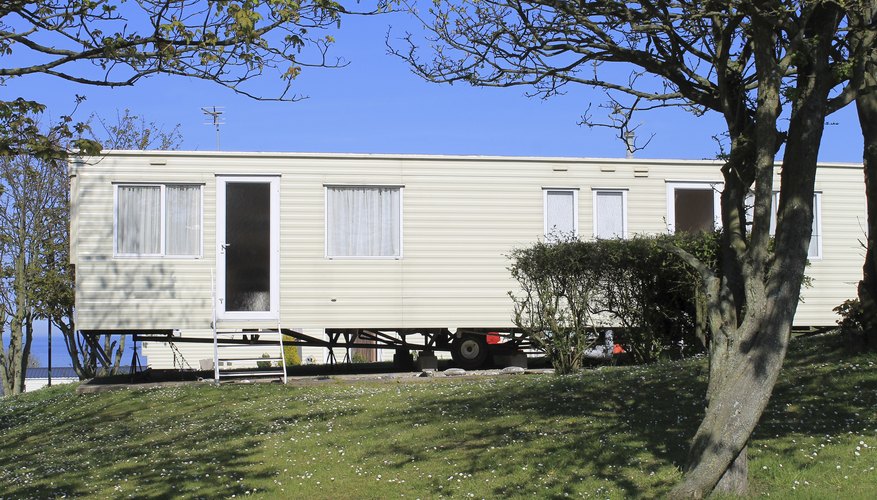Static caravans are especially prone to movement during strong winds or hurricane conditions. Because static caravans are often elevated from the ground, winds can also circulate beneath the structures, causing an upward lifting force. It is much harder to decide which type of tie down and anchor to use, and in what quantity, than it is to actually install them.
Decide which type of caravan tie downs (over-the-top or diagonal) are required based upon your geographic location (wind zone) and the age of your static caravan. Older caravans usually require over-the-top tie downs, which provide more structural stability. Diagonal tie downs (attached to the caravan frame) are usually required for double wide and/or newer static caravans. Either type of tie down may be constructed from metal cable or a strap.
- Static caravans are especially prone to movement during strong winds or hurricane conditions.
- Older caravans usually require over-the-top tie downs, which provide more structural stability.
Next, decide how many tie downs your mobile home will require. This calculation is roughly based on the overall length of the mobile home. The basic guideline is one tie down per 4.5 m (15 feet) of mobile home length per side. It is always prudent to check to make sure your installation meets the minimum requirement for your actual location.
Next, choose the type of anchors you wish to use (anchors secure the tie downs firmly to the ground). Types of anchors include: concrete deadman anchors, auger anchors, drive anchors, hand rock anchors and concrete slab anchors. Regardless of the number of anchors used, each anchor must have a minimum working load rating of 1,429 kg (3,150 lbs). Check with the manufacturer of your anchors to verify this capability.
- Next, decide how many tie downs your mobile home will require.
- Next, choose the type of anchors you wish to use (anchors secure the tie downs firmly to the ground).
Make sure the mobile home is level before proceeding with the tie down/anchor installation. Mark the location of all utilities so that you do not inadvertently dig into them (electric lines, cable television lines, water lines, sewer lines, and phone lines are the most common that need to be marked).
Place over-the-top tie downs over a roof rafter (for strength) according to the manufacturer's complete instructions, but avoid placing them over doors or windows. For diagonal tie downs, attach them securely to the frame following the manufacturer's complete instructions.
- Make sure the mobile home is level before proceeding with the tie down/anchor installation.
- For diagonal tie downs, attach them securely to the frame following the manufacturer's complete instructions.
Install the anchors securely into the ground by carefully following the manufacture'rs complete instructions for that particular type of anchor. Remember, soil type is a very important consideration when installing the anchors correctly.
Attach the tie downs securely to the anchors, working in a criss cross pattern. Do not over tighten any individual anchor, and make sure the tension is equal on all tie down/anchor assemblies.
TIP
All manufacturers of tie down and anchor mechanisms have their own specific systematic procedures for proper installation. Follow these closely.
WARNING
Follow all manufacturer's instructions closely for tie down and anchor placement and installation.
